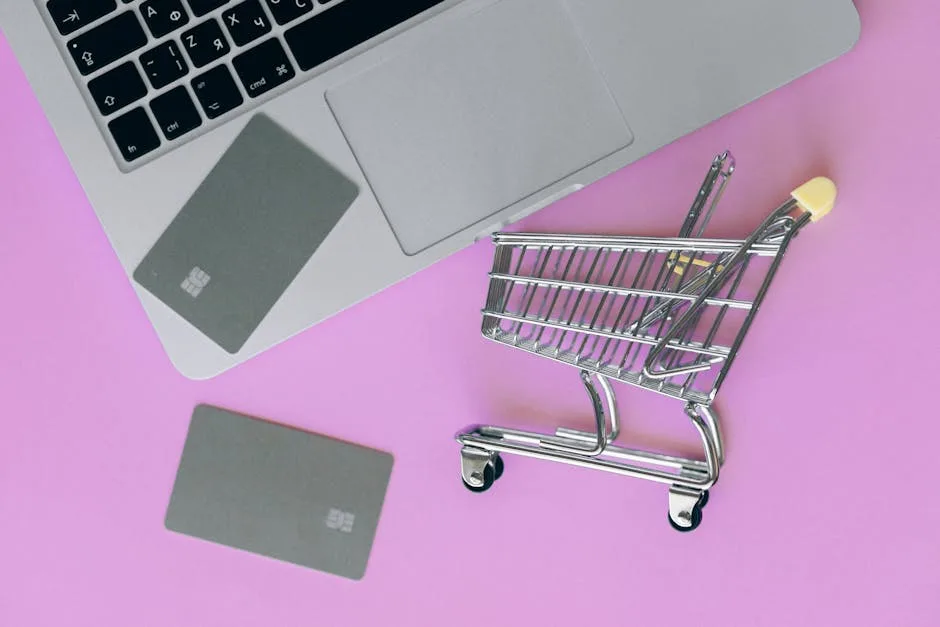- Getting to Know the Brazilian Real (R$)
- Banknotes (Cédulas)
- Coins (Moedas)
- How to Get Brazilian Reais: Your Best Options
- ATMs (Caixas Eletrônicos)
- Currency Exchange Houses (Casas de Câmbio)
- Exchanging Money Before You Go
- Cash or Card? Navigating Payments in Brazil
- The Power of Plastic: Credit and Debit Cards
- When Cash is King
- A Word on Pix: Brazil's Instant Payment System
- Decoding the Tipping Culture in Brazil
- Restaurants and Bars
- Hotel Staff
- Tour Guides and Drivers
- Taxis and Ride-Sharing Apps
- A Quick Look at Daily Costs in Brazil
- Staying Safe: Smart Money Habits in Brazil
So, you’re off to brazil! Get ready for a whirlwind of vibrant culture, breathtaking landscapes, and the infectious rhythm of samba. But before you start dreaming of caipirinhas on Copacabana beach, let’s talk about something a little more practical but just as important: money. Navigating a new currency and local customs can feel daunting, but don’t worry. We’re here to break it all down for you. This isn’t just about exchanging money; it’s about understanding the flow of daily life, from buying a fresh coconut on the street to settling the bill at a fancy restaurant. Getting a handle on your finances will make your trip smoother, safer, and so much more enjoyable. Let’s dive into the world of the brazilian Real and make sure you’re spending smart from the moment you land.
Getting to Know the Brazilian Real (R$)
First things first, let’s meet the local currency. In Brazil, the official currency is the Brazilian Real (pronounced hay-ow). The plural is Reais (hay-ice), and you’ll see it written with the symbol R$. It’s a colorful and beautiful currency, with each banknote featuring a unique animal from Brazil’s incredible biodiversity.
Banknotes (Cédulas)
The banknotes are easy to distinguish by their colors and sizes. Here’s a quick rundown of what you’ll find in your wallet:
- R$2 (Blue): Features a sea turtle (tartaruga-marinha).
- R$5 (Purple): Showcases a great egret (garça-branca-grande).
- R$10 (Red): Adorned with a vibrant macaw (arara-vermelha).
- R$20 (Yellow-Orange): Features the beautiful golden lion tamarin (mico-leão-dourado).
- R$50 (Green): Displays the powerful jaguar (onça-pintada).
- R$100 (Light Blue): Features a dusky grouper fish (garoupa).
- R$200 (Gray/Blue): The newest note, introduced in 2020, featuring the maned wolf (lobo-guará). This one is less common, so don’t be surprised if you don’t see it often.
Having a mix of smaller bills (R$10, R$20, R$50) is always a good idea, as breaking a R$100 or R$200 bill for a small purchase can sometimes be a challenge, especially at smaller shops or with street vendors.

Coins (Moedas)
You’ll also be dealing with coins, called ‘centavos’. The coins in circulation are:
- 5, 10, 25, and 50 Centavos: These are all different sizes and colors, making them fairly easy to tell apart.
- R$1 Coin: A distinctive bi-metallic coin with a golden outer ring and a silver center.
You might notice there’s no 1 centavo coin. While prices can still end in R$0.99, the 1 centavo coin was discontinued, so your final cash total will be rounded to the nearest 5 centavos.
How to Get Brazilian Reais: Your Best Options
Okay, you know what the money looks like, but how do you get it? You have a few solid choices, each with its own pros and cons.
ATMs (Caixas Eletrônicos)
Using an ATM is often the most convenient way to get cash. You’ll find them everywhere in cities. Look for ATMs at major banks like Banco do Brasil, Itaú, Bradesco, or Santander. For safety, it’s always best to use machines located inside a bank branch or a busy shopping mall rather than a standalone one on the street. Before you leave home, be sure to notify your bank of your travel plans to avoid your card being frozen. Also, check their international withdrawal fees—they can add up! Brazilian banks may also charge a usage fee per withdrawal.
Currency Exchange Houses (Casas de Câmbio)
These are dedicated businesses for exchanging foreign currency. You’ll find them in airports and tourist areas. While airport kiosks are convenient for getting a small amount of cash upon arrival, they typically offer the worst exchange rates. If you can wait until you’re in the city, you’ll likely find a better deal by comparing rates at a few different casas de câmbio. When exchanging cash, bring crisp, new bills (especially U.S. Dollars or Euros) as worn or torn notes might be rejected.
Exchanging Money Before You Go
This is an option, but it almost always comes with the least favorable exchange rate. The upside is the peace of mind of having local currency for a taxi or a bottle of water right when you land. If you choose this route, just exchange a small amount to get you through the first day.
Cash or Card? Navigating Payments in Brazil
Brazil has a modern economy where electronic payments are very common, but you’ll definitely want a mix of both cash and card.
The Power of Plastic: Credit and Debit Cards
In most cities, hotels, sit-down restaurants, and larger stores, credit cards are widely accepted. Visa and Mastercard are the most common, while American Express and Diners Club are less so. A key thing to know is that when you pay, the cashier will likely ask ‘crédito ou débito?’. Always choose ‘crédito’ (credit), even if you are using a debit card from your home country. The ‘débito’ option is usually reserved for Brazilian-issued debit cards.
For security, Brazil heavily uses portable card machines (maquininhas). The server will bring the machine to your table, or the cashier will have it at the counter. Never let your card be taken out of your sight. This simple practice dramatically reduces the risk of card cloning, a common scam in many tourist destinations.

When Cash is King
Despite the prevalence of cards, cash (dinheiro) is still essential. You’ll need it for:
- Street food vendors and market stalls.
- Small, family-run shops and restaurants.
- Taxis (though many now accept cards or apps).
- Public transportation like city buses.
- Beach kiosks (barracas) for that refreshing açaí or coconut water.
- Tipping hotel staff or tour guides.
Try to keep a good supply of smaller bills and coins on hand. Paying for a R$5 bottle of water with a R$100 bill won’t make you popular with the vendor!
A Word on Pix: Brazil’s Instant Payment System
You will see signs for ‘Pix’ everywhere. Pix is a revolutionary instant payment system created by Brazil’s Central Bank that allows for free, real-time transfers using a QR code or a key (like a phone number). It’s incredibly popular with locals. As a tourist, using Pix can be tricky as it’s typically linked to a Brazilian bank account. However, it’s good to know what it is, as it shows just how modern Brazil’s payment infrastructure has become.
Decoding the Tipping Culture in Brazil
This is a big one for many travelers, especially those from the U.S. where tipping culture is so ingrained. The good news? Tipping in Brazil is much more straightforward and less of an obligation.
Restaurants and Bars
This is where you’ll encounter tipping most often. Most restaurants and bars will automatically add a 10% service charge (‘taxa de serviço’ or ‘serviço’) to your bill. This is essentially the tip. By law, this charge is optional, but it is standard custom to pay it if you were satisfied with the service. This 10% goes to the staff. You are not expected to leave an additional tip on top of this. If the service was absolutely spectacular and you want to show extra appreciation, leaving a little extra cash on the table is a very kind gesture, but it is rare and certainly not expected.
Hotel Staff
- Bellhops (Maleteiros): A tip of R$5-R$10 per bag is a nice gesture for their help.
- Housekeeping (Camareiras): Leaving R$5-R$10 per day in your room for the housekeeping staff is a thoughtful way to show your appreciation. You can leave it daily or as a lump sum at the end of your stay.
- Concierge: No tip is needed for simple questions or directions. However, if they go above and beyond, like securing a last-minute reservation at a popular restaurant, a tip of R$20-R$50 is appropriate.
Tour Guides and Drivers
For a group tour, a tip isn’t mandatory, but it’s greatly appreciated if you enjoyed the experience. A tip of R$20-R$50 per person is a good range. For a private guide who has spent the whole day with you, a more substantial tip, perhaps around 10% of the tour cost, is a common practice for excellent service.
Taxis and Ride-Sharing Apps
For standard taxis, a formal tip isn’t expected. It’s very common to simply round up the fare to the next Real. For example, if the fare is R$18.50, you might just pay R$19 or R$20 and tell the driver to keep the change (‘Pode ficar com o troco’). For ride-sharing apps like Uber or 99, you can easily add a tip through the app after your ride, which is always appreciated by the drivers.
A Quick Look at Daily Costs in Brazil
Budgeting can be tricky, as costs vary wildly between a major city like São Paulo and a small town in the Northeast. But here are some ballpark figures to give you an idea:
- A bottle of water: R$3-R$5
- A local beer (600ml bottle): R$10-R$15 at a simple bar
- A caipirinha at a beach kiosk: R$15-R$25
- A ‘prato feito’ (set lunch plate) at a local spot: R$20-R$35
- A nice dinner for two in a mid-range restaurant: R$150-R$250
- A city bus or metro ride: R$4-R$6
Staying Safe: Smart Money Habits in Brazil
Finally, a few words on safety. Brazil is an amazing country, but like any popular travel destination, it’s wise to be cautious and aware.
- Be Discreet: Avoid flashing large amounts of cash or wearing expensive jewelry in public.
- ATM Smarts: Use ATMs inside secure locations during daylight hours. Shield the keypad when you enter your PIN.
- Divide Your Assets: Don’t carry all your cash and cards in one place. Keep a small amount of daily cash easily accessible and the rest secured in a money belt or hotel safe.
- Beware of Distractions: Be extra vigilant in crowded areas like markets, bus stations, or during festivals, as these are prime spots for pickpockets.
- Inform Your Bank: Let your bank and credit card companies know your travel dates to prevent them from flagging legitimate transactions as fraudulent.
By keeping these simple tips in mind, you can focus on what really matters: soaking up the incredible energy, beauty, and warmth that Brazil has to offer. Enjoy every moment!




